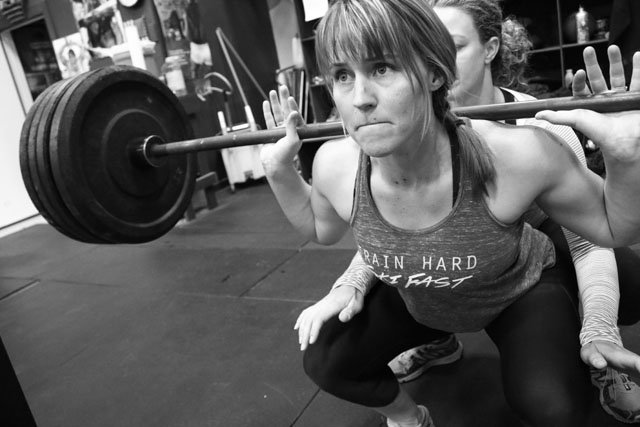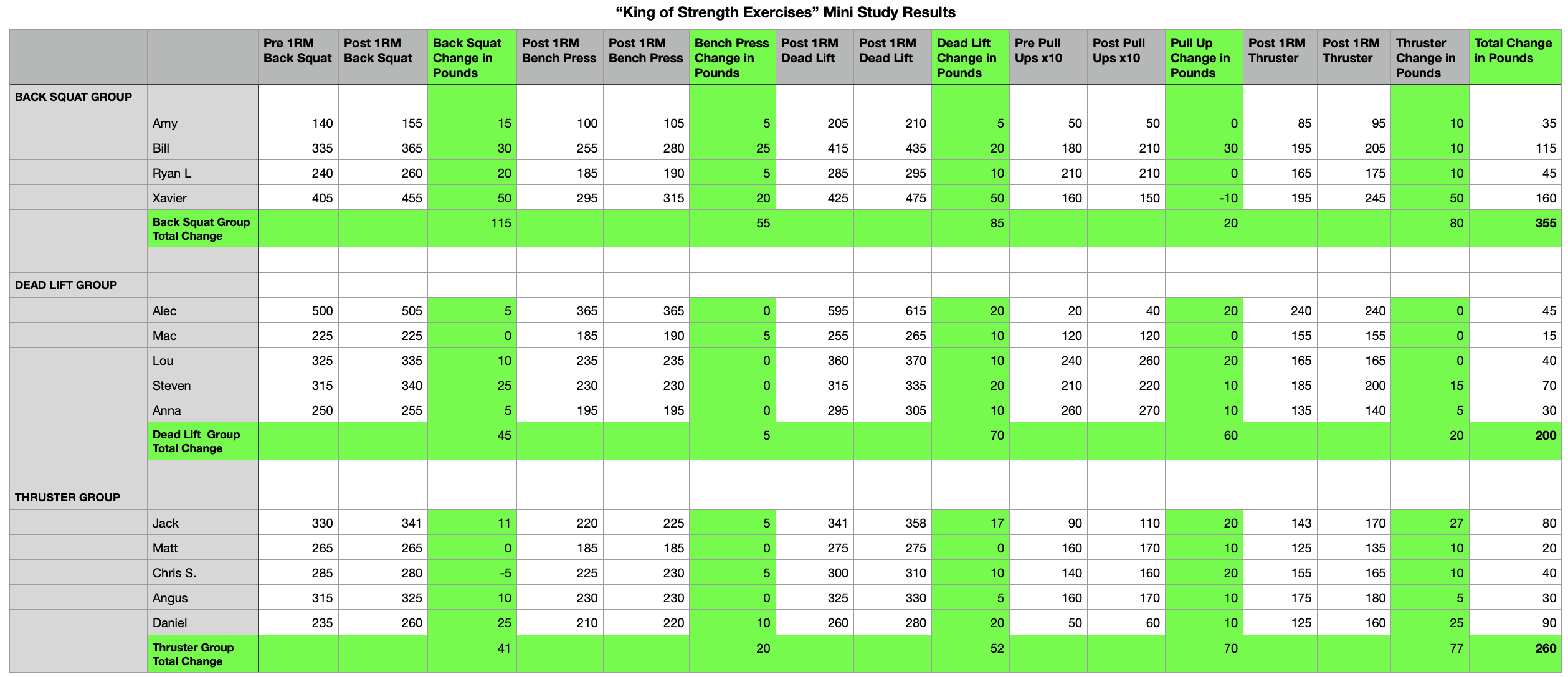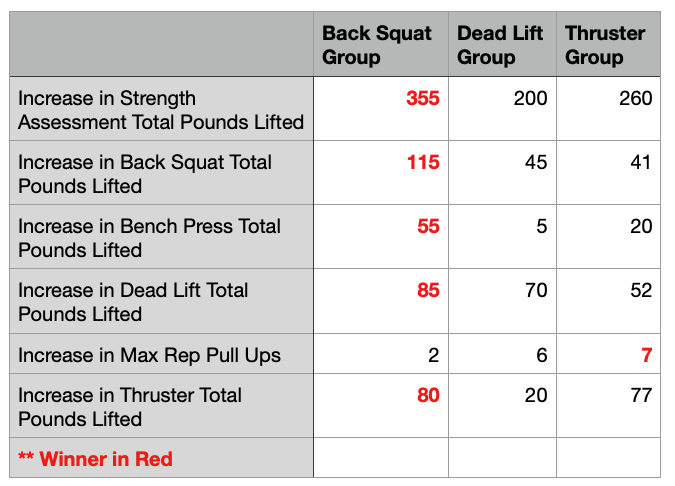
By Rob Shaul, Founder
BLUF
This Mini Study compared the total body strength building capacity of three classic strength exercises: Back Squat, Dead Lift and Thruster.
The results found that the Back Squat dominated the contest. The Back Squat Group not only increased strength more across the board, but they also increased strength on the Dead Lift more than the Dead Lift Group and Thrusters more than the Thruster Group! Further, the Back Squat Group out-performed the other groups with one fewer lab rat! (4 in the Back Squat Group, 5 in each the Dead Lift and Thruster Group).
Based on these results, the classic Back Squat is the undisputed “King” of Strength Exercises.
Background and Study Design
A heated debate in the strength coach world is over what exercise is the “King” of non-olympic total body strength exercises. Many strength coaches crown the Back Squat, others the Deadlift, and myself – I lean toward the thruster.
We want to put this debate to the test using a focused 3.5 week, 5 day/week training cycle mini study.
Lab Rats were randomly assigned to 3 groups: Back Squat Group, and Dead Lift Group and Thruster Group.
Pre-cycle, all groups complete a total body strength assessment:
- 1RM Back Squat
- 1RM Dead Lift
- 1RM Thruster
- 1RM Bench Press
- Max Rep Strict Pull Ups
Then, for the next three weeks, each group completed the same strength progression methodology, with the only difference being the exercise deployed – i.e. the Back Squat Group only did Back Squats, etc.
Below was the weekly schedule:
- Mon: Heavy deadlifts or back squats or Thrusters (depending on group), + short work capacity
- Tue: Tempo deadlifts or back squats or Thrusters (depending on group) + chassis Integrity
- Wed: 45 min athlete’s choice endurance
- Thu: Heavy deadlifts or back squats or Thrusters (depending on group), + short work capacity
- Fri: Dynamic Deadlifts or Back Squats or Thrusters (depending on group)+ Chassis Integrity
After three weeks of programming, all Groups re-took the total body strength assessment and results were compared.
Results & Discussion
See results below:

Note on the pull ups: To “standardize” the exercises, pre and post – cycle max rep pull ups were multiplied by ten. “Bill” in the Back Squat Group, for example, went from 18 to 21 pull ups with the pre and post cycle assessment.
The Back Squat Group dominated the results in not only in terms of overall strength gained based on pounds lifted, but also for individual lifts. The only strength event the Back Squat Group didn’t win was the increase in Max Rep pull ups – which the Thruster Group won.
The Back Squat Group dominated despite having just 4 lab rats, whereas both the Dead Lift and Thruster Group had 5 lab rats each. It’s safe to assume with if the Back Squat Group also had 5 lab rats, its dominance over the other groups would have been even greater.
 ,
,
I was surprised by the Back Squat’s dominance in this mini study. Going in, I predicted that the Thruster would win. Results in hand, I can now surmise that the Back Squat defeated the Thruster because the cycle working loads were heavier for the back squat group – and thus more overall muscle recruitment was needed. This increased muscle recruitment developed central nervous system (CNS) pathways that carried over to all exercises.
But this doesn’t explain why the Back Squat also defeated the Dead Lift. Perhaps the reason is that the Back Squat, in general, has a greater range of motion … i.e. the barbell moves further each rep. So not only were the Back Squat Groups working loads heavy, but they were also moving the barbell further than the similarly heavy Dead Lift Group.
This additional barbell movement recruited more CNS pathways and led to greater overall strength gains.
Next Steps
It’s pretty clear from this study that if an athlete has only time for one strength exercise, he or she should do Back Squats. The Back Squat has the greatest carry over to total body strength.
By design we didn’t add in any of the total body olympic strength exercises to this study – such as the clean and jerk, snatch, power clean or power clean and push press. The issue with olympic exercises is that often an athlete’s strength improvement can be limited by technique. In comparison to the olympic lifts, the Back Squat, Dead Lift and Thruster are relatively technically simple.
This finding will influence time constrained, single lift, selection and other MTI programming as we move forward. Athletes can expect to see more back squats in the training sessions.
Comment below or send your questions/feedback to rob@mtntactical.com